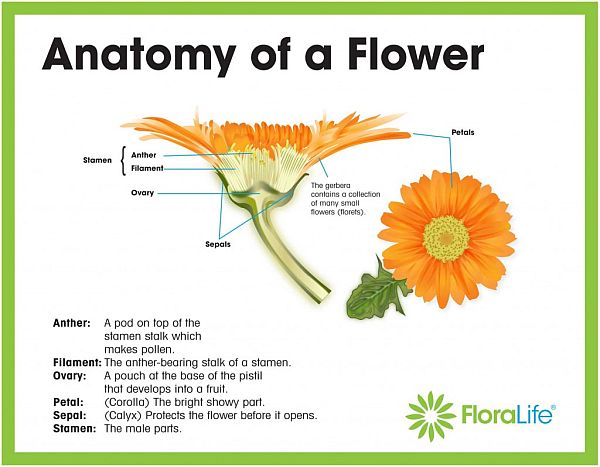CVNews April 4 2014 (Thanks, Minty)
Perusing the floral section in the supermarket is usually the first thing on my grocery list these days. For the past 3 years I have documented genetic damage not only plants growing locally in SE Michigan, but in domestic and imported plants, fruits, and produce being sold to the public. Some of my best finds have come from items grown along the Pacific Coast, and this week a recent shipment of spring bouquets and potted plants at Trader Joe’s proved the same is still happening, as I suspected it would.
 First, I comb through the bouquets, camera in hand. I look at the most obvious part of the plant, the flower head including petals and center. If I can spot a mutation, I check the stem and related leaves included. I look for color anomalies as well, as we know from past research mutations in color genes is another known effect of exposure.
First, I comb through the bouquets, camera in hand. I look at the most obvious part of the plant, the flower head including petals and center. If I can spot a mutation, I check the stem and related leaves included. I look for color anomalies as well, as we know from past research mutations in color genes is another known effect of exposure.
During normal plant growth, the cells are self-organizing and grow in a symmetric pattern, following the Fibonacci Sequence of phyllotaxis. Phyllotaxis is the study of fractions and spirals in plants, which includes fruit and flower number, divergence angles, and petal numbers and formation. This pattern allows the plant to use the least amount of energy needed for amazingly rapid growth to maturity. Once the plant has reached it’s full potential, the perfect geometry of a plant allows it to absorb the sun’s rays and collect rainwater as efficiently as possible, channeling it to the stem fornourishment.
 Plato, Fibonacci, and Johanes Kepler all made contributions to the discovery and application of the Golden Ratio in nature. It appears in many aspects of our everyday world, including hurricanes, ram horns, spider webs, and snail shells, and even in the arrangement of our facial features. Also, take a look at our galaxyfrom above…we live in a Fibonacci Sequence. Our world is filled with many mysteries that scientists and mathematicians alike are working to figure out if this was just a coincidence, or something else. For whatever reason, it’s how normal plants grow, and it is also how we distinguish the normal from the mutated.
Plato, Fibonacci, and Johanes Kepler all made contributions to the discovery and application of the Golden Ratio in nature. It appears in many aspects of our everyday world, including hurricanes, ram horns, spider webs, and snail shells, and even in the arrangement of our facial features. Also, take a look at our galaxyfrom above…we live in a Fibonacci Sequence. Our world is filled with many mysteries that scientists and mathematicians alike are working to figure out if this was just a coincidence, or something else. For whatever reason, it’s how normal plants grow, and it is also how we distinguish the normal from the mutated.
Damage to the DNA of the plant cells will disrupt this geometric growth pattern, leading to any number of mutational expressions such as conjoining, fasciation, gigantism, albinism, or other anomalies. These are known effects from decades of experimentation and research in areas of previous radioactive contamination, such as the areas around the Chernobyl accident and Three Mile Island.

After sorting through bouquets, I move on to the potted plants. Gerbera Daisies in the past have yielded a surprising number of mutations in flower heads, stems, and leaves, and this week was no different. I suspect this is because they are closely related to Sunflowers, or Helianthus annuus , which are notorious for their ability to remove radioactive Cesium from soil. This particular batch of Gerberas came from British Colombia, Canada.
 The domesticated cultivars are mostly a result of a cross between Gerbera jamesonii and another South African species Gerbera viridifolia. It is the fifth most used cut flower in the world (after rose, carnation, chrysanthemum, and tulip). It is also used as a model organism in studying flower formation. Out of 18 potted Gerbera’s on this particular day at Trader Joe’s, more than half of the plants had some obvious evidence of mutation in just the blooms alone. I would venture to bet that if walked into your local Trader Joe’s today and looked carefully at their Gerbera Daisies, that you would have similar findings. If you do, please takes some pictures and share them with us on our new Mutation Map Project. Their colorful beauty also makes them a favorite eye-catching post for people sharing mutation images on social media, and increasing the awareness of genetic damage that is occurring.
The domesticated cultivars are mostly a result of a cross between Gerbera jamesonii and another South African species Gerbera viridifolia. It is the fifth most used cut flower in the world (after rose, carnation, chrysanthemum, and tulip). It is also used as a model organism in studying flower formation. Out of 18 potted Gerbera’s on this particular day at Trader Joe’s, more than half of the plants had some obvious evidence of mutation in just the blooms alone. I would venture to bet that if walked into your local Trader Joe’s today and looked carefully at their Gerbera Daisies, that you would have similar findings. If you do, please takes some pictures and share them with us on our new Mutation Map Project. Their colorful beauty also makes them a favorite eye-catching post for people sharing mutation images on social media, and increasing the awareness of genetic damage that is occurring.
Continue reading @ CVNews
